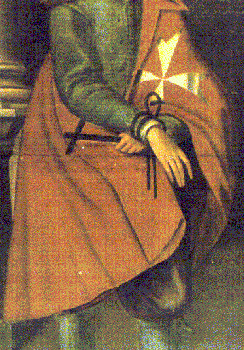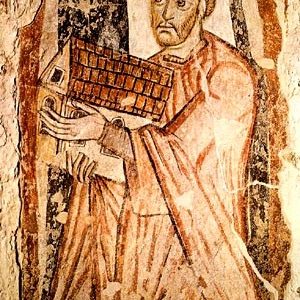
 Adrian Fortescue was born in 1476 to an old, respected Devonshire family at Punbourne, England, and was a cousin of Anne Boleyn. A country gentleman, he was married twice and had two daughters by his first marriage and three sons by the second. He became a Dominican tertiary at Oxford, was a knight of the Bath, and was in frequent attendance at the royal court. He also served as a justice of the peace for Oxford County, fought in France in 1513 and 1523, was in Queen Catherine’s retinue on her trip to Calais, and attended Anne Boleyn at her coronation, even though he opposed Henry VIII’s divorce and remarriage. For all his honors, however, he lived for the most part a quiet life in the country, thrifty in business, careful with his accounts, and a collector of homely wit and wisdom. He was also deeply religious.
Adrian Fortescue was born in 1476 to an old, respected Devonshire family at Punbourne, England, and was a cousin of Anne Boleyn. A country gentleman, he was married twice and had two daughters by his first marriage and three sons by the second. He became a Dominican tertiary at Oxford, was a knight of the Bath, and was in frequent attendance at the royal court. He also served as a justice of the peace for Oxford County, fought in France in 1513 and 1523, was in Queen Catherine’s retinue on her trip to Calais, and attended Anne Boleyn at her coronation, even though he opposed Henry VIII’s divorce and remarriage. For all his honors, however, he lived for the most part a quiet life in the country, thrifty in business, careful with his accounts, and a collector of homely wit and wisdom. He was also deeply religious.
His orderly, peaceful life ended when, by a whim of King Henry VIII, Sir Adrian was arrested on August 29, 1534, with no reason being given for the arrest. He was released in the spring of the following year but was again arrested February 3, 1539, after he refused to take the Oath of Supremacy, which declared the King of England the “Supreme Head of the Church of England.” He was sent to the Tower of London and condemned in April for treason, but what the treason was never was stated. The decree against him, however, went on to call for the death of Cardinal Pole and several others because they “adhered themselves to the Bishop of Rome” and it is a commonly held belief that Sir Adrian died for the same reason. He was beheaded in July 1539 along with Venerable Thomas Dingley at Tower Hill, London. He was beatified in 1895 and has always had a following by the Knights of St. John, the order of which Sir Adrian was a member.










